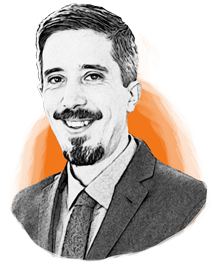March 12, 2019 PAO-M03-19-NI-023
When complex fractures are repaired today, metal fixation implants are commonly used. Metal hardware can impair the healing process, weaken the bone surrounding the implants and in some cases lead to post-operative complications and secondary removal surgeries following implant failure, irritation or pain.
Ossio hopes to change that. The U.S. Food and Drug Administration recently granted the company a 510(k) clearance for its family of bio-integrative bone pins. Made of a natural mineral fiber matrix, the pins encourage natural bone healing that avoids unnecessary hardware removal surgeries and improves the overall healthcare economics of orthopedics, according to Ossio CEO Brian Verrier.
During initial insertion, the pins have higher mechanical strength than cortical bone and gradually transfer the load to the native bone as it heals. Preclinical studies showed that it takes approximately 18–24 months for the natural implants to be fully integrated into the bone without causing any major inflammatory responses.
The next step is to commercialize its products. To do so, Ossio which is based in both Israel and Woburn, Massachusetts, recently raised $22 million in equity financing. The round was led by OCV Partners, with additional backing from Ortho Vision and Secocha Ventures.
The funds will be used to hire additional staff and expand operations and new product development. Ossis plans to begin U.S. commercialization of its mineral fiber–based family of bone pins in the second quarter of 2019, focusing initially on the foot and ankle segments, as well as forefoot treatments where additional surgeries to remove metal hardware are common.
Ossio is also conducting a clinical trial in Europe for a hammertoe fixation implant made of the same material. The company hopes to receive a CE mark for the product in 2020.
Eventually, Ossio hopes to have products used in trauma, sports injury, reconstruction, pediatric and spine applications through the development of different pins, screws and plates.

David is Scientific Editor in Chief of the Pharma’s Almanac content enterprise, responsible for directing and generating industry, scientific and research-based content, including client-owned strategic content, in addition to serving as Scientific Research Director for That's Nice. Before joining That’s Nice, David served as a scientific editor for the multidisciplinary scientific journal Annals of the New York Academy of Sciences. He received a B.A. in Biology from New York University in 1999 and a Ph.D. in Genetics and Development from Columbia University in 2008.